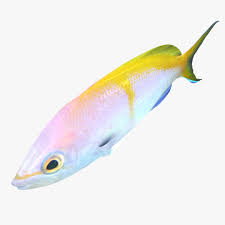Dragons have long held a revered position in Chinese culture, symbolizing power, wisdom, and harmony with nature. In the practice of Feng Shui, dragons are more than mythical creatures; they are embodiments of energy flow and cosmic balance. Their depictions in Feng Shui paintings carry profound meanings, influencing the placement, energy, and prosperity of spaces.

This article delves into how dragons are portrayed in Chinese Feng Shui art and the significance of these representations in enhancing the energy of homes and businesses.
The Significance of Dragons in Feng Shui
In Feng Shui, dragons represent Yang energy, a force associated with strength, vitality, and expansion. They are considered protectors and bringers of good fortune, capable of dispelling negative energy and attracting prosperity.
Dragons and the Five Elements
Chinese Feng Shui incorporates the Five Elements—Wood, Fire, Earth, Metal, and Water—and dragons are often associated with these elements depending on their design and color:
- Green Dragons: Represent the Wood element, signifying growth and vitality.
- Red Dragons: Associated with Fire, symbolizing passion and energy.
- Golden Dragons: Linked to Metal, representing wealth and stability.
- Black Dragons: Embody the Water element, symbolizing wisdom and adaptability.
- Yellow Dragons: Represent Earth, embodying balance and nourishment.
Each depiction aligns with specific Feng Shui purposes, such as boosting financial luck, enhancing career prospects, or fostering harmonious relationships.
Depicting Dragons in Feng Shui Paintings
Feng Shui paintings of dragons are rich in symbolism and artistic detail, designed to evoke positive energy. These artworks often combine traditional Chinese painting techniques with symbolic imagery.
1. The Majestic Dragon in Motion
A common depiction features a dragon in dynamic motion, coiling through the sky or ascending toward the heavens. These images convey power and movement, symbolizing the unstoppable flow of energy (Chi).
- The Dragon and Clouds: Dragons are often painted amidst swirling clouds, representing their control over weather and their connection to rain and fertility. This imagery is believed to attract abundance and harmony.
- Flying Dragons: Paintings of dragons soaring above mountains or rivers signify the elevation of fortune and spiritual growth.
2. The Dragon and the Pearl
One of the most iconic motifs in Feng Shui art is the dragon clutching or chasing a flaming pearl. This pearl, often surrounded by radiant light, symbolizes wisdom, enlightenment, and the ultimate achievement of goals.
- Placement and Meaning: Hanging such paintings in offices or study rooms is said to inspire creativity and success in endeavors.
- Duality of Forces: The pearl also represents Yin energy, complementing the dragon’s Yang, creating a balance of opposing forces.
3. The Dragon and Water
Water is a critical element in Feng Shui, representing wealth and flow. Paintings of dragons emerging from or interacting with water are particularly popular in homes and businesses aiming to attract financial success.
- Dragon and Waterfalls: These images symbolize a continuous flow of wealth and opportunities.
- Dragon in Rivers: Depictions of dragons in serene rivers emphasize stability and harmonious living.
Cultural Symbolism in Feng Shui Dragon Paintings
Beyond their Feng Shui functions, the artistic depictions of dragons often incorporate cultural symbols, enhancing their meaning.
1. Dragons and Mountains
In many Feng Shui paintings, dragons are paired with mountains, representing protection and stability. Mountains are seen as guardians, and the dragon amplifies their strength, making these artworks ideal for creating a secure and grounded energy in homes.
2. Nine Dragons Motif
The number nine is auspicious in Chinese culture, symbolizing longevity and completeness. Paintings featuring nine dragons, often interacting with elements like water or fire, are considered especially powerful for attracting luck and prosperity.
3. Dragons and Lotus Flowers
The combination of dragons with lotus flowers represents purity and transformation. This pairing is believed to cleanse negative energy and foster spiritual growth.
Feng Shui Placement for Dragon Paintings
The placement of dragon paintings is as important as the artwork itself. Proper positioning ensures the dragon’s energy flows harmoniously through the space.
1. Best Locations for Dragon Paintings
- Living Rooms: Hanging a dragon painting in the living room promotes vitality and prosperity for the household.
- Offices: In workspaces, dragons enhance leadership qualities and inspire success.
- Entrances: Placing a dragon near the entrance welcomes positive energy and wards off negativity.
2. Orientation and Direction
- Dragons should face inward, symbolizing the bringing of fortune and energy into the space.
- Avoid positioning dragon paintings in bedrooms or bathrooms, as the dynamic energy can disrupt rest and relaxation.
3. Avoid Clutter
The area around the dragon painting should be free of clutter to allow the energy to flow smoothly.
Modern Interpretations of Dragon Paintings in Feng Shui
While traditional dragon paintings remain popular, modern Feng Shui art often incorporates contemporary styles to suit various aesthetics. Abstract dragon designs or minimalist representations are increasingly common, allowing a broader audience to incorporate this powerful symbol into their spaces.
Conclusion
Dragons in Chinese Feng Shui paintings are more than artistic expressions; they are powerful tools for channeling energy, fostering harmony, and attracting prosperity. Their rich symbolism and diverse depictions make them an enduring part of Feng Shui practices, blending art with spirituality.
By understanding the meaning behind these paintings and placing them thoughtfully, individuals can invite the dragon’s auspicious energy into their lives, creating spaces that are vibrant, balanced, and full of potential.










